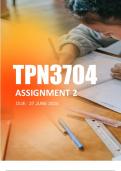Samenvatting
AREA STUDIES ASSIGNMENTS AND SUMMARY
- Vak
- Instelling
In this document you will find a summary of all the lectures, plus MY assignments I wrote for this class. My five assignments were graded: 7,5 - 8,0, 5,5 - 9,0 - 7.5. REMINDER; PLAGIARISM IS FORBIDDEN but you can use my old assignments as an example! I passed this course with a 8.0.
[Meer zien]












